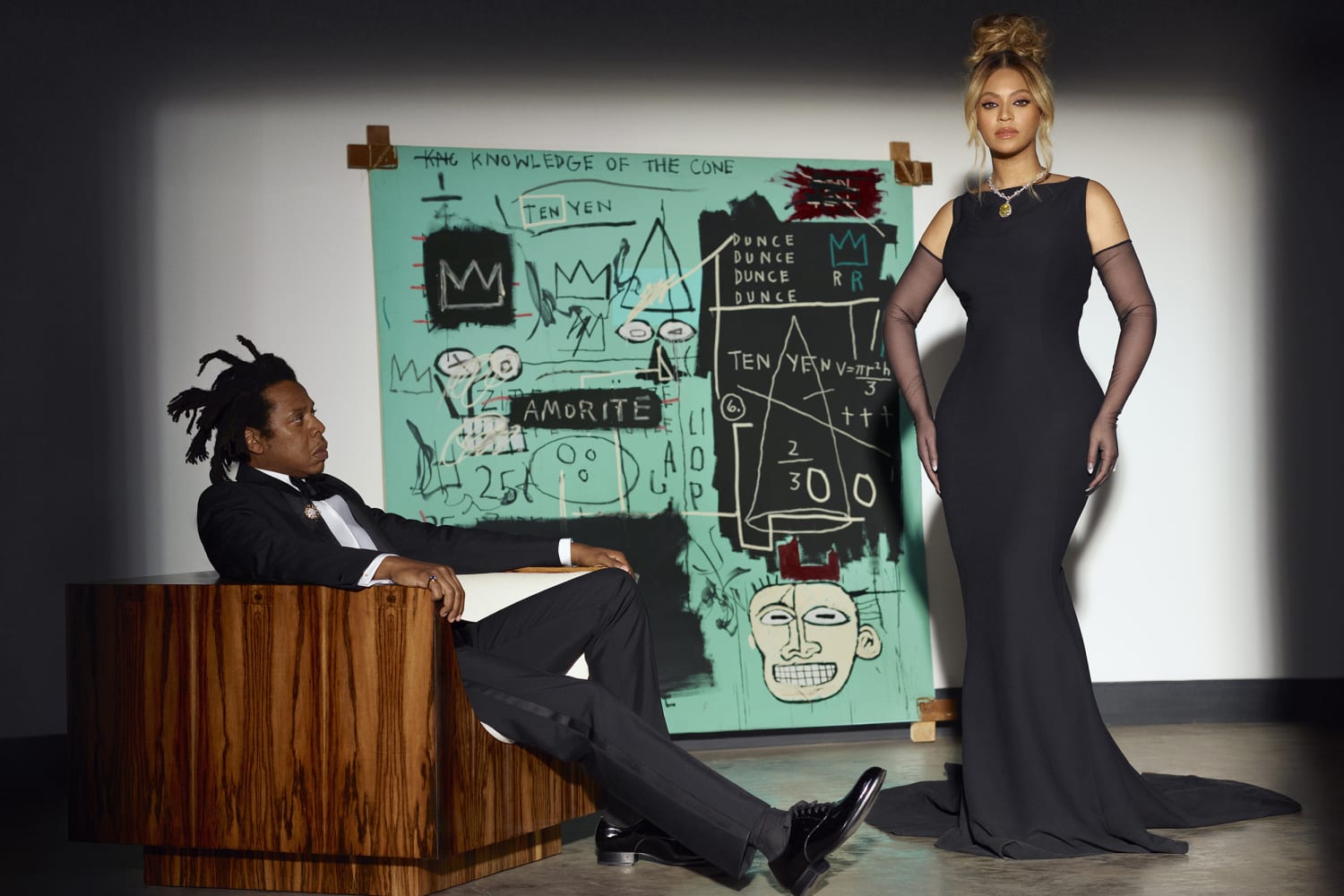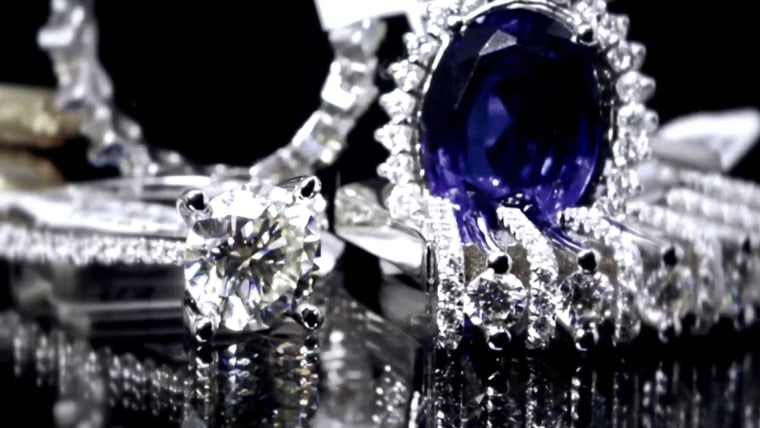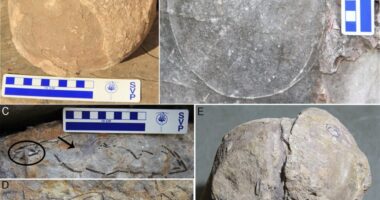Tiffany & Co.’s latest campaign “About Love,” featuring Beyoncé, Jay-Z, the rarely seen Jean-Michel Basquiat painting “Equals Pi” and the infamous 128.54-carat yellow Tiffany diamond is not about love at all. The diamond necklace, Tiffany claims, sparkles as if lit by an inner flame, but its 82 facets reflect an ugly truth and an unfinished story of white supremacy and colonialism that is difficult to ignore.
The campaign has the “Black Parade” singer posing in an Audrey Hepburn-inspired black sheath dress, opera gloves and an elegantly messy updo. Not to be outdone, husband Jay-Z wears a suit, Jean Schlumberger’s Bird on a Rock brooch reimagined as cufflinks, and dreadlocks suspended straight up in the air: the iconic look of the late Puerto Rican/Haitian American painter Basquiat.
Tiffany claims Basquiat’s little seen 1982 painting, not quite unknown to the art world (Sotheby’s tried to auction it twice and it was prominently featured in a WWD spread), echoes the jewelry company’s signature robin’s-egg blue. There is of course no way to know if that’s true. It’s more likely that Basquiat would’ve found this posthumous “homage” problematic at best.
Basquiat came to prominence as an anti-establishment graffiti star. His art was a canvass for racial consciousness and social awareness, perhaps most graphically depicted in his painting “Obnoxious Liberals,” which portrays figures representing capitalism and its powerless victims. (To be fair, some critics believe he was actually fine with the commercialization of his art, like his friend and “New York cool” elder statesman Andy Warhol.)
Beyoncé is the fourth woman and first Black woman to wear the famous gem — unearthed by De Beers in South Africa in 1877. The so-called Tiffany diamond was previously worn by Audrey Hepburn, Lady Gaga and the American socialite Mary Whitehouse, the first time it was paraded in public, at a Tiffany Ball in 1957.
Tiffany & Co., which was recently acquired by the fashion conglomerate LVMH, hopes the campaign (together with a separate effort dubbed “Not Your Mother’s Tiffany”) will freshen and update Tiffany’s image for a new generation of luxury consumers. But the company may have miscalculated the tastes (and sophistication) of its target demographic.
The problem is the backstory of the yellow Tiffany diamond. Found in the Kimberley diamond mines in South Africa (under British rule) in 1877 as a 287.42 carat rough stone, it was later purchased by Charles Lewis Tiffany in 1878 for $18,000. Its estimated worth today is $30 million.
And when I saw the “About Love” ad, I didn’t think about glamour or empowerment or even true love. Instead, I pictured a three-year-old boy.
Africa is the world’s top producer of diamonds, an industry worth around $80 billion worldwide in 2015. While a lot has been done to clean up the gemstone mining pipeline, notably the export and import controls created by the 2003 Kimberley Process, Human Rights Watch noted in 2018 that “the trade in diamonds still gives rise to serious human rights violations.”
The United Nations defines a blood diamond, or conflict diamond, as a gem mined in a war zone and used by militias and warlords to finance their operations. Meanwhile Tiffany states on its website that the company has “a zero-tolerance policy toward conflict diamonds, and source our diamonds only from known sources and countries that are participants in the Kimberley Process.”
So the Tiffany Diamond may not technically be a blood diamond according to the U.N., But this is a definition that deserves to be expanded, as Washington Post opinion columnist Karen Attiah noted. The older the diamond, the higher the likelihood that it has contributed in some way to the bloody (and ongoing) fighting over the continent’s resources, to say nothing of the socioeconomic and racial inequality perpetuated by decades of plundering colonial leaders.
And when I saw the “About Love” ad, I didn’t think about glamour or empowerment or even true love. Instead, I pictured a three-year-old boy.
In 2004, I was working in Sierra Leone as a documentary producer, doing a story on blood diamonds and the atrocities committed there in the 1990s. I visited one of the main amputee camps in Freetown, established to help war victims and their families still living in dire poverty — one of the more brutal manifestations of the human cost of diamond mining.
I watched as a boy’s mother tried to bathe him outside the camp in a red plastic tub. The child couldn’t keep his balance because the rebel group known as the Revolutionary United Front (RUF), led by Foday Sankoh, had amputated one of his legs. He kept on tipping the tub and falling out. His mother would put him back in and try again to simply bathe her child.
Amputations were the RUF’s trademark atrocity in Sierra Leone’s civil war. Their signature was the crude cutting off of feet, hands, ears, lips, and noses. Between 1991 and 1999, the war claimed over 75,000 lives, 500,000 Sierra Leoneans became refugees and displaced over half of the country’s approximately 4.5 million people. And diamonds have helped bankroll rebels, in Sierra Leone and elsewhere.
I find it hard to believe that Beyoncé was completely unaware of this ugly historical context.
The diamond mines in 19th century South Africa were not brutal in the same way as the battlefields of Sierra Leone in the 1990s. But they certainly did not adhere to current international labor standards. And the impact of colonialism would linger for a century more. As Attiah writes, “South Africa’s conflict-ridden mining industry paved the way for apartheid.”
I find it hard to believe that Beyoncé was completely unaware of this ugly historical context. Following the backlash, an unnamed source said to be close to Beyoncé (so take that for what it’s worth) claimed the singer “is disappointed and angry that she wasn’t made aware of questions about its history.” Neot exactly a clarion call for change.
Beyoncé’s mother, Tina Knowles, defended her daughter by calling the critics “activists” and asking on social media how many of “you socially conscious activists owned diamonds,” and if they checked to see where the diamond came from.
But that is not the point. This is a history the Carters should have known because they are one of the world’s most powerful couples of color. Beyoncé actively addresses race and African issues (“Black is King”) and both artists occupy a privileged place on the world stage from which they have spoken out about the exploitation of Africans.
In a press release, Tiffany & Co. says that the partnership with the Carters “reflects [its] continued support of underrepresented communities,” and pledged $2 million in scholarships and internship programs for Black colleges and universities.
But ultimately, I was left wondering what Tiffany and the Carters are trying to sell. Is it aspiration? Are they implying that everyone — no matter our color or background — aspires to look like Audrey Hepburn from “Breakfast at Tiffany’s” and wear white colonial diamonds, no matter where they came from or what they represent?
Do they want us to simply ignore the history of colonialism, racism, and the image of that little boy in the red plastic bucket who couldn’t stand up?
Basquiat’s famous tag was SAMO©, which stood for “same old,” as in the “same old sh–.” He scrawled it all over the streets, walls, and doors of New York City. It feels especially appropriate now.
I don’t expect enlightened consciousness from Tiffany. But I expect more from Beyoncé and Jay-Z.
Source: | This article originally belongs to Nbcnews.com










